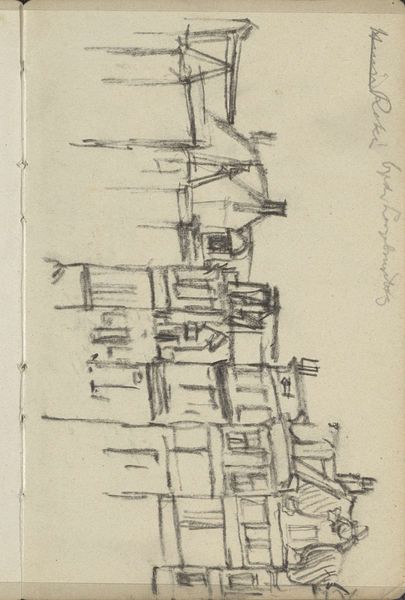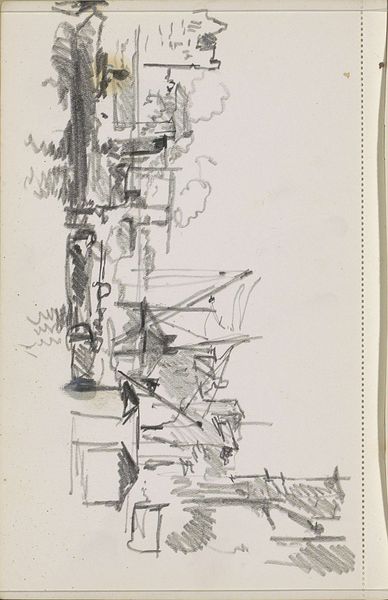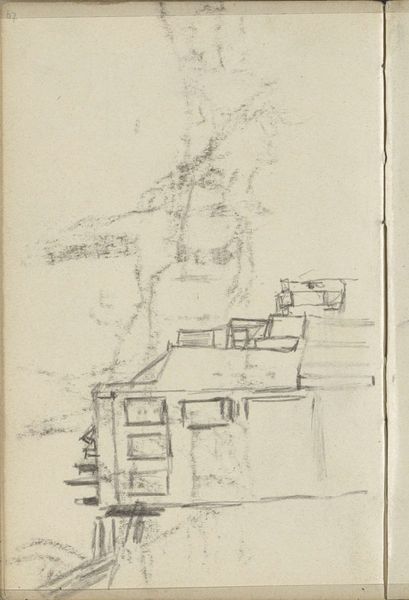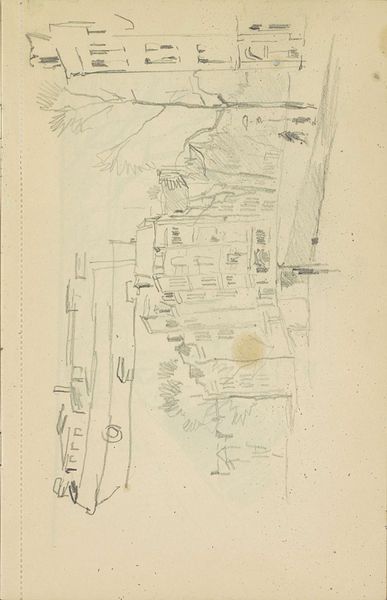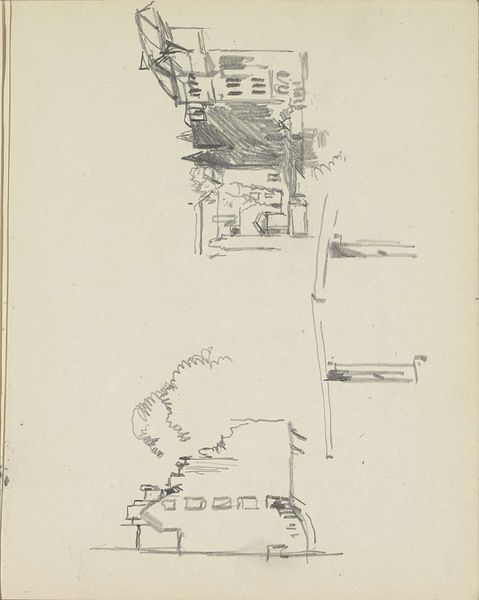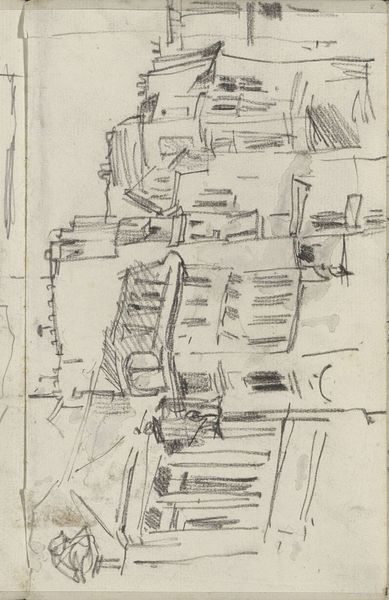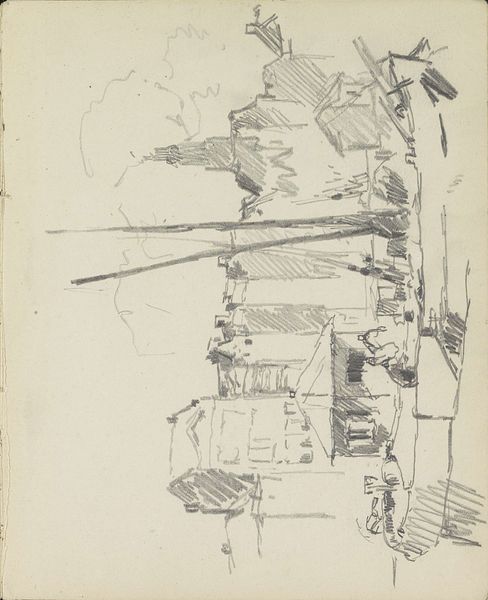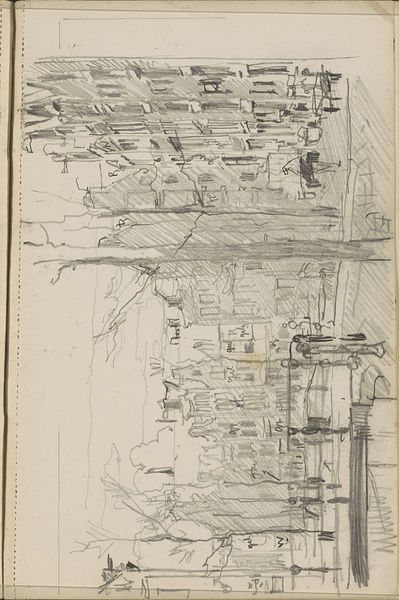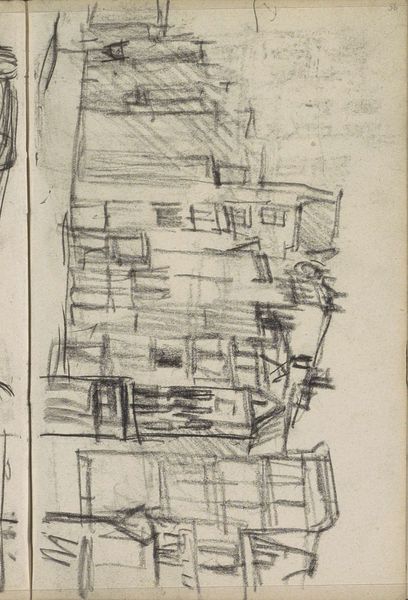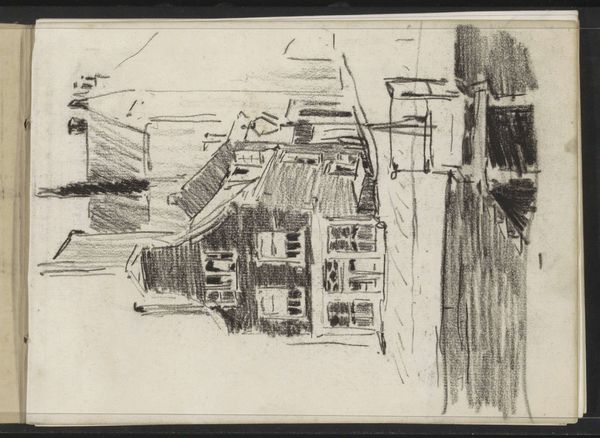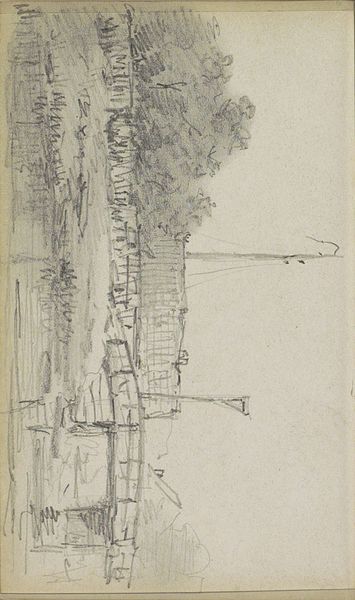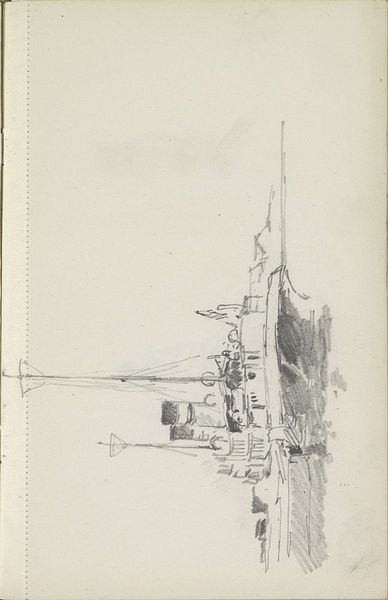
drawing, pencil, graphite
#
drawing
#
impressionism
#
form
#
pencil
#
line
#
graphite
#
cityscape
#
realism
Copyright: Rijks Museum: Open Domain
Editor: This is George Hendrik Breitner’s "Aangemeerde schuiten te Amsterdam," dating back to the 1880s. It’s a pencil and graphite drawing held at the Rijksmuseum. It feels very raw, almost like a snapshot of a fleeting moment. What do you see in this piece beyond the surface? Curator: This drawing, beyond its aesthetic simplicity, gives us insight into the rapid urbanization and the changing socio-economic landscape of Amsterdam in the late 19th century. How did industrialization affect the communities living along the canals? The docked boats are almost like characters frozen in a narrative of change. Do you notice any details that hint at the lives of the people connected to these boats? Editor: Well, there’s a certain...starkness to the image. Not a lot of extraneous detail, it's almost utilitarian. Curator: Precisely. The utilitarian aspect, rendered with such directness, might reflect a social realism, Breitner documenting the working class realities. Think about who owned these boats, who worked on them, and where they fit into the social hierarchy of Amsterdam. This image becomes more than just a cityscape; it’s a study of labor and urban development. Do you think Breitner consciously aimed to highlight social issues? Editor: It definitely makes you consider the daily lives of people living during that period. I hadn't initially considered the boats as symbols of labor. Curator: It requires us to dig beneath the picturesque and consider the lives and labor obscured within the aesthetic appeal. How does situating the artwork within this historical context reshape your understanding of its impact? Editor: I think it adds a layer of meaning and invites consideration beyond the artistic choices that were made. Curator: Absolutely, viewing art through a lens of social awareness allows us to appreciate the stories behind the strokes and the contexts that shaped its creation. Editor: I’ll definitely look at sketches differently going forward! Thanks.
Comments
No comments
Be the first to comment and join the conversation on the ultimate creative platform.
